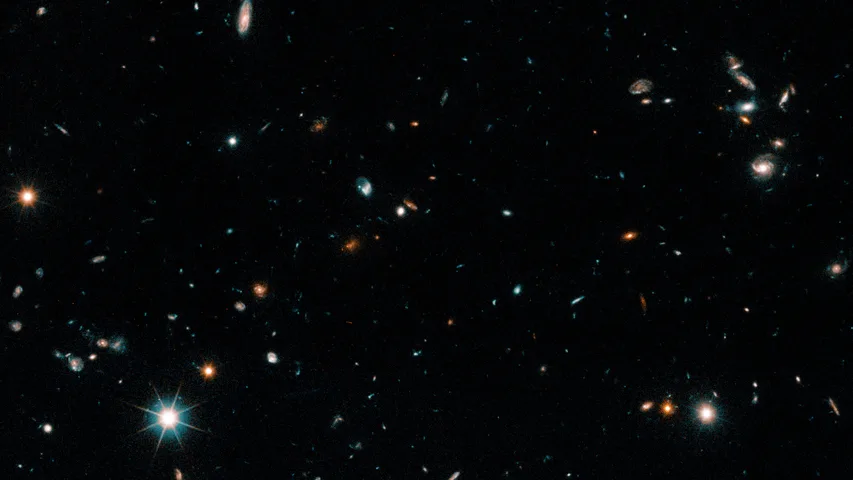
See 265,000 galaxies all in one amazing Hubble space image
Happy International Space Day! Enjoy one of the best views of our universe ever, from the Hubble Space Telescope!
The famous Hubble Space Telescope has been in space for over 29 years, and astronomers have now combined its deepest views of our universe to date into one amazing image!

This crop of the new Hubble Legacy Field contains around 200,000 galaxies, stretching back through 13.3 billion years of time, to just 500 million years after the universe's birth in the big bang. Click here for a closer look! Credit: NASA, ESA, G. Illingworth and D. Magee (University of California, Santa Cruz), K. Whitaker (University of Connecticut), R. Bouwens (Leiden University), P. Oesch (University of Geneva), and the Hubble Legacy Field team
This 'Hubble Legacy Field' stitches together 16 years worth of images - nearly 7,500 of them, in fact - gathered by astronomers, including those that had gone into making the 1995 Hubble Deep Field, the 2004 Hubble Ultra Deep Field, and the 2012 Hubble eXtreme Deep Field.
"Our goal was to assemble all 16 years of exposures into a legacy image," Dan Magee, the team's data processing lead, from the University of California, Santa Cruz, said in a Hubble press release. "Previously, most of these exposures had not been put together in a consistent way that can be used by any researcher. Astronomers can select the data in the Legacy Field they want and work with it immediately, as opposed to having to perform a huge amount of data reduction before conducting scientific analysis."

This full view of the Hubble Legacy Field shows the uneven edges cropped out of the 'cleaner' image, above, showing off all of the roughly 265,000 galaxies contained in the composite. Credit: NASA, ESA, G. Illingworth and D. Magee (University of California, Santa Cruz), K. Whitaker (University of Connecticut), R. Bouwens (Leiden University), P. Oesch (University of Geneva,) and the Hubble Legacy Field team
"We've put together this mosaic as a tool to be used by us and by other astronomers," said Garth Illingworth of the University of California, Santa Cruz, leader of the team that assembled the image. "The expectation is that this survey will lead to an even more coherent, in-depth, and greater understanding of the universe's evolution in the coming years."
For more views, check out the Hubble Space Telescope website.











